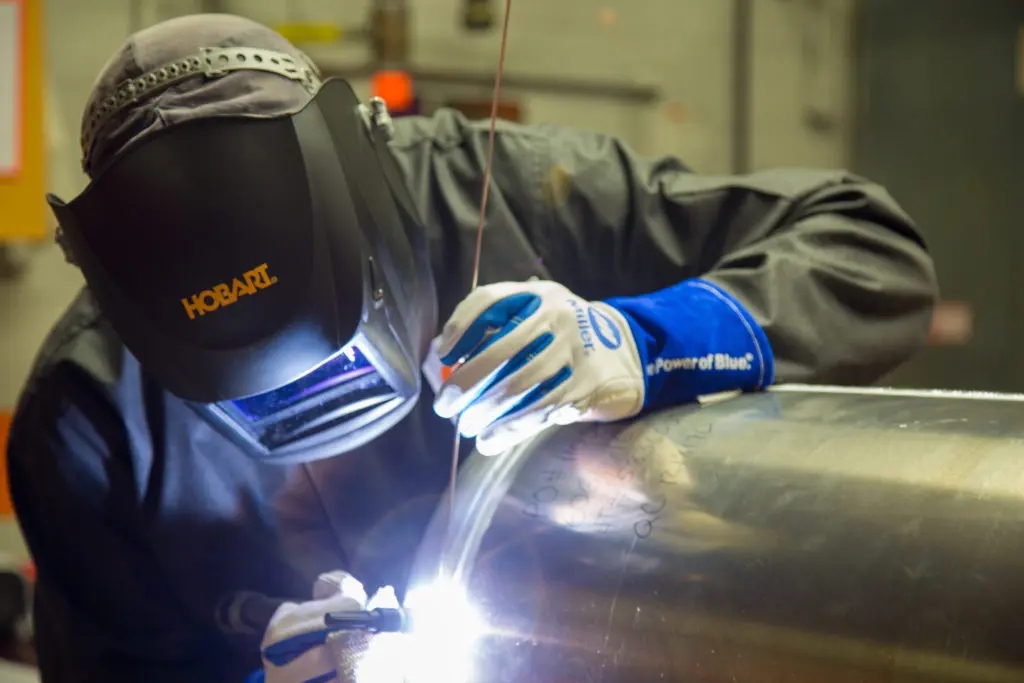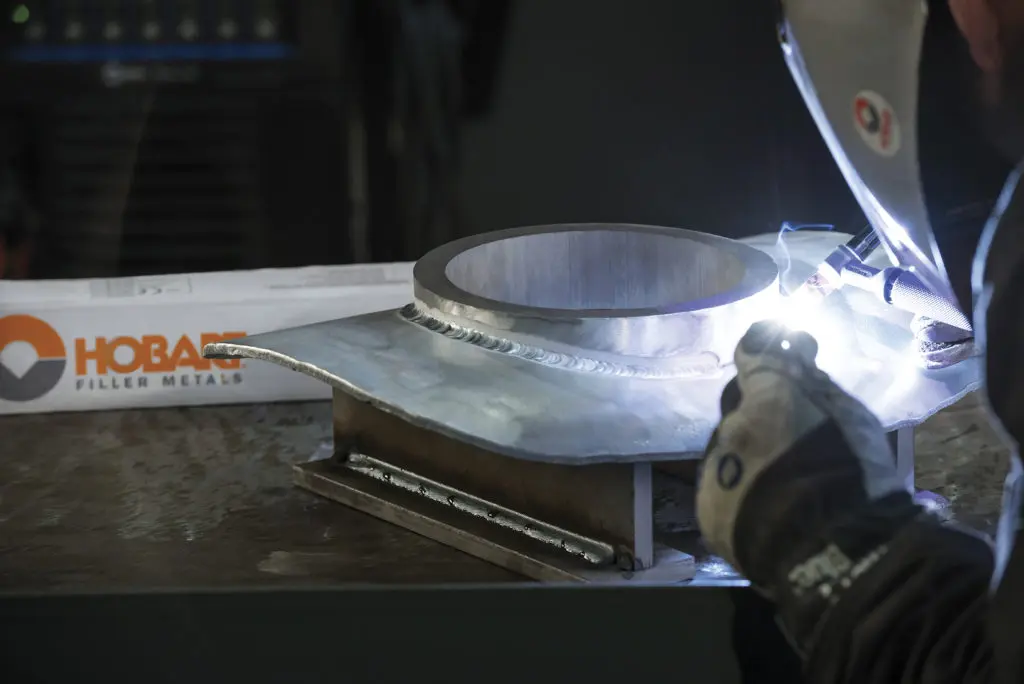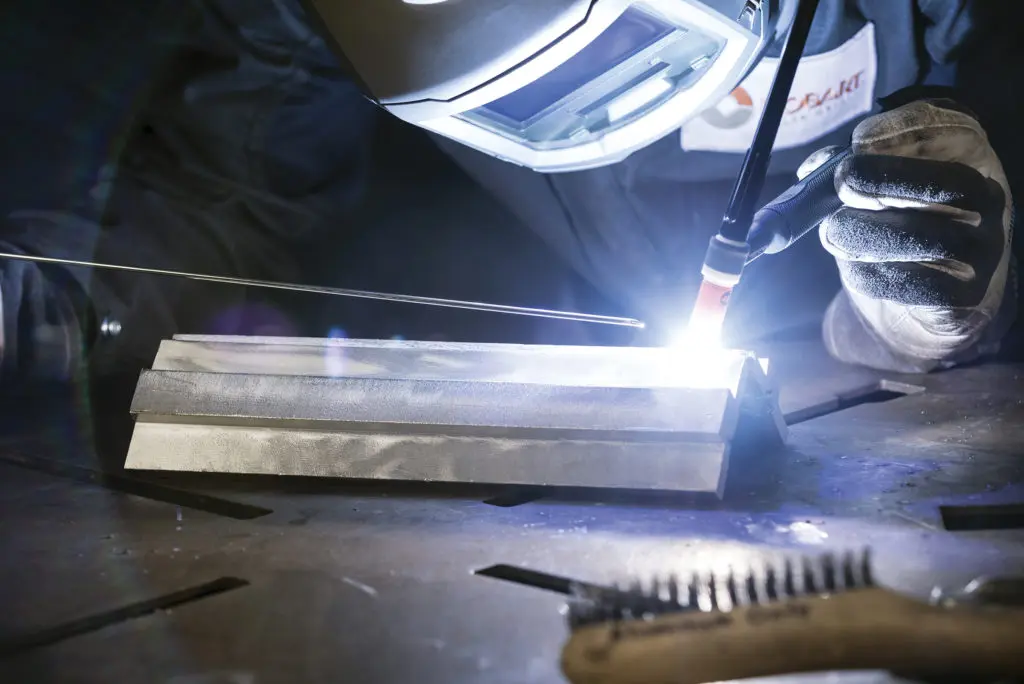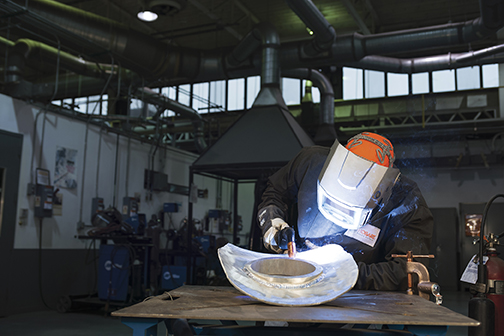5 Tips for Understanding Aluminum TIG Filler Metals, Setup and Welding
From shipyards and aerospace applications to general fabrication, operations choose to TIG weld aluminum when they need to produce high-quality welds with premium aesthetic quality. Specific applications range from small, intricate components — that cannot be MIG welded without burn-through — to much larger weldments that require porosity-free welds for critical applications.
The first step in creating high-quality aluminum TIG welds is choosing the right filler metal for the job. Prioritizing best practices for weld preparation, machine setup, filler metal storage and handling are also key for optimal TIG welds.
Challenges of TIG Welding Aluminum
To implement some best practices for TIG welding aluminum, it’s important to understand the common challenges involved with welding the material.

Aluminum has a higher thermal conductivity rate than other materials, such as steel or stainless steel. As a result, it will draw heat away from the weld pool quickly and require more energy to achieve penetration. However, too much energy or too low of travel speeds will create a larger heat affected zone (HAZ). This makes proper heat input critical when welding aluminum.
The biggest challenges to overcome are porosity, lack of fusion and overheating the base material.
Porosity can come from improper cleaning, leaks in connections or gas hoses and high relative humidity causing moisture accumulation on the material or (water-cooled) torch if they cross the dew point.
Lack of fusion can happen when operators use a travel speed that is too slow, causing them to ride the molten filler puddle. It can also occur if the operators don’t use enough amperage to melt the base material or fail to remove the aluminum oxide. This oxide layer melts at approximately three times the temperature of aluminum and is also an insulating barrier.
Overheating can go hand in hand with a lack of fusion. Operators may ride the puddle and sit in one place in an effort to establish fusion, but this can add too much heat into the base material. This can reduce the strength of the HAZ.
In addition to these common challenges with aluminum, the TIG process typically requires more operator skill and is a slower process overall compared to MIG. This makes it a more expensive process for operations to use.
Gaining the Best Weld Quality
There are some common best practices that help optimize results. Consider these five tips that can help deliver better performance when TIG welding aluminum.
1. Choose the right TIG filler metal. Typically, any filler metal for MIG welding is also available in TIG rod form. Some of the most commonly used alloys for TIG welding aluminum are 4043, 4047, 4943, and 5356. The 4xxx series filler metals share many similar characteristics.
A 4043 rod is a good all-around filler metal for general fabrication. Its silicon content reduces distortion but limits strength and toughness compared to 5xxx alloys. 4047 contains 12% silicon, offering minimal contraction and distortion during welding. It also creates a shiny weld, making it ideal for aluminum toolboxes. 4943 can be used in place of 4043 or 4047 filler metals. It has similar shrinkage control but higher strength, closer to 5356. Among common rods, 5356 delivers the most strength and ductility. Always consult an aluminum filler metal chart for the best choice.
TIG filler rods are available in standard 36-inch lengths and diameters that range from 1/16-inch to 5/32-inch for some alloys. With large weldments, choosing a larger-diameter rod can benefit productivity by filling the weld joint faster. TIG filler metal comes in many different packaging options, such as 1-pound tubes, 10-pound boxes, and 40-pound boxes.

2. Prep the base material. The steps welders and companies take for cleaning the base material depend on the quality of weld the operation needs to achieve. Critical applications typically require a more careful level of cleaning when TIG welding aluminum, while more cosmetic applications may not brush off the oxide to prevent having scratches next to the welds.
When preparing aluminum for welding, clean the surface with paper towel or rag and a cleaning agent like acetone. This removes contaminants like dirt and hydrocarbons, such as oils, paint or adhesive residue. It’s not recommended to use shop rags because these may still contain dirt or oil.
After removing the surface contamination, remove the aluminum oxide layer that serves as an insulating barrier with a stainless steel wire brush, which helps reduce chances for weld contamination that could cause porosity. Be sure to use a new stainless steel wire brush or one dedicated for use on aluminum to avoid cross-contamination from other materials.
3. Adjust machine setup and parameters. The most typical setup for TIG welding aluminum involves using an AC TIG welding power source with 100% argon shielding gas. Be careful not to undersize the machine. The general rule of thumb is to have 1 amp per .001 inch of material thickness. So, welding a 1/4-inch fillet weld would require a 250-amp machine. An undersized machine won’t provide enough amperage for the job. This can result in too little heat to properly establish the weld puddle or the need to preheat the component. It can also put additional stress on the power source by welding at max output for extended periods of time.
Using DC TIG for welding aluminum is not a typical setup, but it can be done. DC TIG requires the use of a helium or helium and argon mix shielding gas, which provides a much hotter welding arc and deeper penetration. But since the DCEN process doesn’t have the cleaning action that the electrode-positive portion of the AC process does, the initial steps for cleaning the base material and removing the oxide layer are critical.
Many of today’s TIG welding power sources have some type of preset function. This helps to ensure operators are welding within a range of proper parameters. Using preset parameters can be especially helpful for less experienced welders. More experienced welders can adjust the frequency and balance to tailor their arc cone. The higher the frequency setting, the tighter the arc cone will be for a narrower penetration profile and less arc wander.
Adjusting the balance setting changes how much time is spent in electrode-negative versus electrode-positive mode. A balance that is more on the electrode-positive side provides more cleaning action to strip away the oxide layer and clean the base material during welding. The higher the electrode-negative side, the more heat goes into the base material for faster travel speeds and less of a cleaning band outside the weld area. It’s important to balance the two, depending on the condition of the base material and the needs of the application.

4. Follow the “hot and fast” rule. The best way to overcome lack of fusion or other issues when TIG welding aluminum is to weld hot and fast. That is, start with enough amperage to establish the puddle quickly (within a second or two) and then start welding immediately and maintain a good travel speed. Some operators are prone to slowing down to achieve better penetration. Don’t dwell in the weld puddle or move too slowly. This puts more heat into the base material than necessary and can greatly reduce the strength of the HAZ.
Watch this video for tips on establishing the puddle and getting proper puddle control when TIG welding aluminum.
5. Handle and store filler metals properly. Proper handling and storage help prevent contamination that can cause porosity weld defects. Keep separate storage containers for each type of filler rod. Don’t mix them together, keep rods covered, and store them in a dry location without a lot of temperature fluctuation. If the filler metals are stored elsewhere, bring the rods into the welding area at least 24 hours before welding. This allows the rods to acclimate to room temperature. Storing filler metals in a cool, air-conditioned office and then welding them in a hot shop can cause condensation. That moisture can then add porosity to the welds. Multiple dew point crosses can also cause the oxide layer to grow thicker on the aluminum rod.
Aluminum TIG Welding
The properties of aluminum make welding it different from other materials. Operators can improve results by understanding the basics of aluminum and following best practices for choosing filler metals, cleaning the material and adjusting parameters.




Do you have a training video on this topic that I can share?